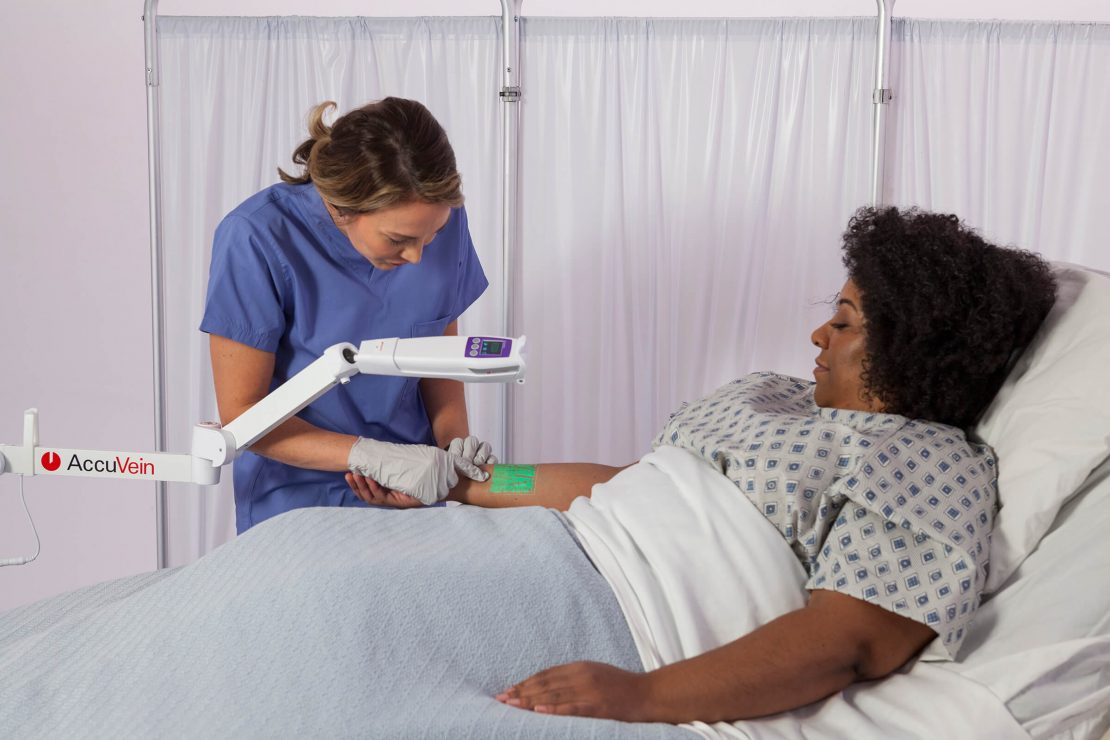Acute Care
AccuVein NIR guided venous assessment is an essential first step in peripheral IV therapy.
A More Complete Picture = Better Informed Decisions/PIVC Insertions.
AccuVein supports an advanced approach to peripheral IV assessment and access by projecting a vivid map on the skin of underlying superficial veins, bifurcations, and valves often impalpable and invisible to the naked eye.
An AccuVein NIR guided site assessment supports best practices.
Leading professional societies recommend using near-infrared (NIR) vein assessment to support better informed decision-making and care quality. When clinicians use an AccuVein device for pre-insertion assessment, they can rapidly identify optimal vein targets. This not only dramatically increases first attempt success and reduces escalation calls, but it also helps ensure that catheters last for the duration of therapy.

AccuVein For
Learn how AccuVein delivers value across the healthcare setting.
Improve Patient and Staff Well-Being
By integrating advanced technology into standard protocols and supporting the highest level of care, hospitals can dramatically improve the patient experience while demonstrating a deep commitment to a multi-generational workforce with varying knowledge, skills and experience.
#1 patient concern is pain
associated with multiple needle sticks1

100%
of hospital HR professionals agree that employee and patient satisfaction is a top priority2

82% of nurses
believe that technology has a positive impact on patient care4

Fewer than 57%
of nursing students receive PIVC insertion instruction3

84% of nurses surveyed prefer AccuVein
to traditional PIVC techniques6
39% reduction in pain and 45% reduction in patient stress
with AccuVein-guided IV insertion5

80% of staff
surveyed reported more efficient access site assessment with AccuVein6
Accuvein Breaks the Cycle of Waste, Saving Time and Money
The Institute for Healthcare Improvement (IHI) has recognized that expending time and resources without adding value to patients is the very definition of waste. Increased first-stick success, decreased escalations, and improved resource allocation are all ways that AccuVein can help enhance efficiency and deliver greater profitability to a busy hospital.
Up to 50% of first stick attempts fail7

23.5%
of hospital acquired BSIs were in patients with PIVCs8
Up to 43% of PICCS are “non-essential”
and placed due to difficult or failed PIVC access in some care settings10-11

54% increase in complications
when 2 or more puncture attempts are performed9

45% decrease in escalation calls
with AccuVein (when implemented across various nursing units)12

78% reduction in PIV procedure time
with AccuVein13
2. Enhancing Nurse Well-Being Nationwide HOLLIBLU and Feedtrail Mental Health Nurse Survey. Available here.
3. Glover KR, Stahl BR, Murray C, et al. A Simulation-Based Blended Curriculum for Short Peripheral Intravenous Catheter Insertion: An Industry-Practice Collaboration. J Contin Educ Nurs. 2017. Available here.
4. https://avanthealthcare.com/blog/articles/how-technology-is-impacting-nursing-practice-in-2019.stml
5. Guillon P., Makhloufi, M., “prospective evaluation of venous access difficulty and a near-infrared vein visualizer at four French hemophilia treatment centers, “ Hemophilia (2014), 1-6. Available here
6. Horn ME, Molchanskly. Evaluation of the Use of Newar-Infrared Vein Visualization Technology in a Community Hospital: a Value-Added Clinical Experience. 2021. AVA Annual Scientific Meeting. Orlando FL. Available here.
7. Helm RE, Klausner JD, Klemperer JD, Flint LM, Huang E. Accepted but unacceptable: peripheral IV catheter failure. J Infus Nurs.2015; 38(3):189-203.
8. Stuart RL, Cameron DR, Scott C, et al. Peripheral intravenous catheter-associated Staphylococcus aureus bacteraemia: more than 5 years of prospective data from two tertiary health services. Med J Aust. 2013;198(10):551-553. doi:10.5694/mja12.11699. Available here.
9. Infection Control Today, May 2020, Vol4, No.4, Establishing Vascular Access Teams for Patient Safety Nancy Moureau, RN, PhD, CRNI, CPUI, VA-BC
10. Reeves T, Morrison D, Altmiller G. A Nurse-Led Ultrasound-Enhanced Vascular Access Preservation Program. Am J Nurs. 2017 Dec;117(12):56-64. doi: 10.1097/01.NAJ.0000527490.24610.51. PMID: 29189249. Govindan S. Available here.
11. Snyder A, Flanders SA, Chopra V. Peripherally Inserted Central Catheters in the ICU: A Retrospective Study of Adult Medical Patients in 52 Hospitals. Crit Care Med. 2018 Dec;46(12):e1136-e1144. doi: 10.1097/CCM. 0000000000003423. PMID: 30247241; PMCID: PMC6317857
12. Delvo-Favre E, Daneti G, Guin P. Implementation of Near-Infrared Technology (AccuVein AV400) to Facilitate Successful PIV Cannulation. Poster session at 2014 INS Annual Meeting. Abstract J Infus Nurs 2014, vol 37 No. 4). Available here.
13. Demir D, Inal S. Does the Use of a Vein Visualization Device for Peripheral Venous Catheter Placement Increase Success Rate in Pediatric Patients? Pediatr Emerg Care. 2019;35(7):474-479. Available here.
NIR Vein Visualization Conforms with INS Practice Recommendations
As stated in the INS 2021 Standards: “Use near-infrared (NIR) light technology to aid in locating viable superficial peripheral venous sites and decreasing procedure time for peripheral intravenous catheter (PIVC) insertion.”5

Imaging/Tech Supervisor
Cancer Center
